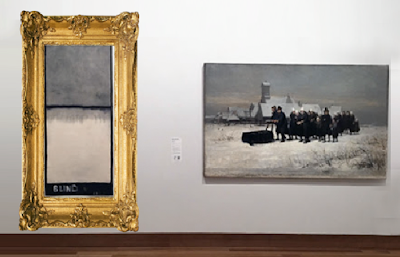Over 50 years after pulling the stunt, a couple of ex Otago students admitted to knocking up three copies of Colin McCahon’s Painting 1958. One of that work's claims to fame is that it had shared first prize in the Hays Art Competition in Christchurch the year before to almost universal distain. The co-winners were the more popular Francis Jones and Julian Royd whose reputations have not exactly endured. Some time after being offered as a gift to the Christchurch Art Gallery and rejected rather publicly, McCahon’s work was put on display in the University of Otago University Student Union. Some of the students were not impressed in the usual I-could-do-that way and two of them made three copies that they planned to hang with the McCahon. Viewers would then be challenged to pick which was the original. They saw immediately that it was in fact easy to tell which was the McCahon so they hid it in a broom cupboard to keep the hoax alive. Lots of laughs at the expense of contemporary art and artists followed until the painting was rehung and the students went back to work. Colin McCahon himself was less than impressed but as the perps were unknown, legal action was ruled out. Although childish, it's still a more benign stunt than the one pulled by the Director of the Dunedin Public Art Gallery 11 years later. He asked the public to paint their own McCahons in the foyer while the Colin McCahon survey show was on in the Gallery. The ‘good’ old days.
Image: the three 'McCahons' as published in the Otago Evening Star (...and thanks for the head's up Z)

































